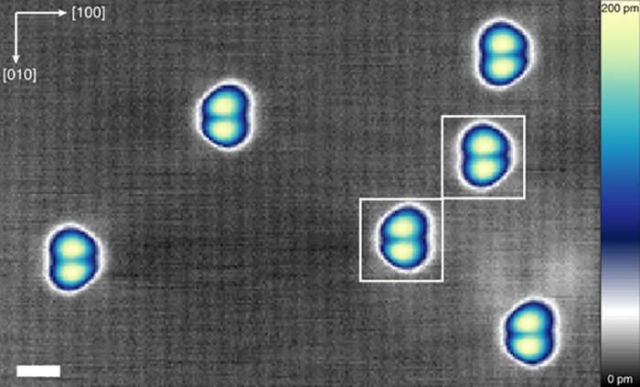Scientists discovered a new mechanism for magnetic storage of information in the smallest unit of matter: a single atom.
While the proof of principle was demonstrated at very low temperatures, this mechanism by scientists at Radboud University, shows promise for room temperature operation.
In this way, it will be possible to store a thousands of times more information than in current hard drives.
As our current computing architecture is not getting much faster and using a lot of power, researchers are interested in new strategies to store more information in an energy efficient way.
The electrons in an atom orbit around the nucleus, but also “spins” themselves, much like the Earth rotates both around the Sun and its own axis. The total amount it spins, or its angular momentum, is what gives us magnetism.
Above, Magnetised cobalt atoms. Credit Radboud University
First author Brian Kiraly explains:
“Computers have reached fundamental limitations as to how much better they can get, creating a huge demand in materials research for alternatives. Modern computers use a lot of electricity, currently demanding more than 5 percent of the world’s electricity. Fundamental science says we can gain a lot more in energy efficiency. We are focusing on a very basic component of modern computers: a bit of memory. We use atoms, because they are the smallest unit of matter and also enable us to further understand the fundamental science behind their behavior. Our current question: how can we store information within a single atom and how stable can we make that piece of information?
Instead of this spin angular momentum, which previous researchers have used, we figured out a way to make an energy difference between a few of the orbitals of the cobalt atom and now use the orbital angular momentum for our atomic memory. This has a much bigger energy barrier and might be viable to make the single atom memory stable at room temperature.
In the end, it is still a magnet with an angular momentum, but we are now able to control the atom from 0 to 1 state, which has a much higher stability than other magnets.”
source Radboud University






Leave A Comment